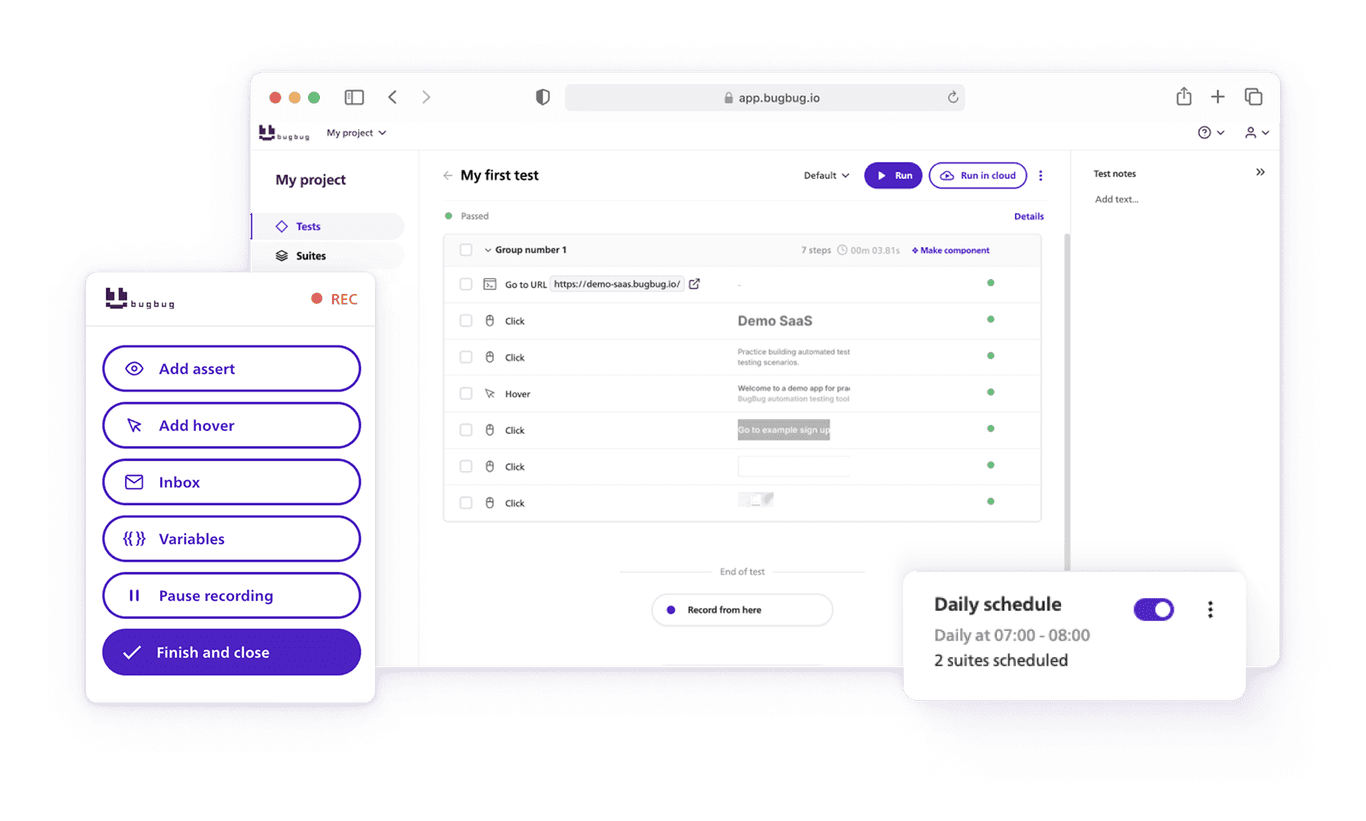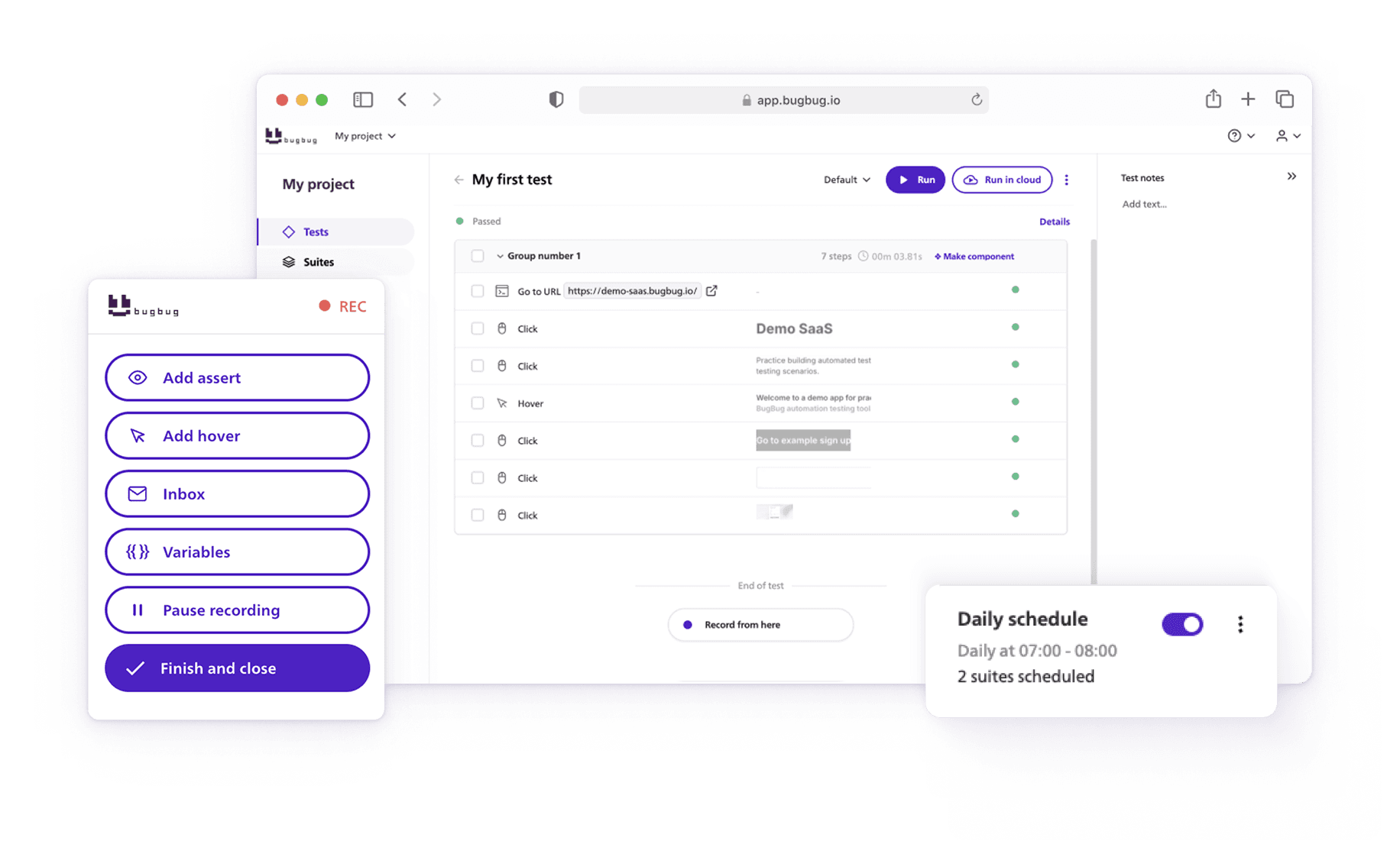🤖 Summarize this article with AI:
💬 ChatGPT 🔍 Perplexity 💥 Claude 🐦 Grok 🔮 Google AI Mode
Software testing isn’t just about finding bugs — it’s about building confidence that an application will behave as expected when real people use it. From unit tests that validate individual functions to integration tests that check connected components, every layer of testing plays a role in delivering quality software.
🎯 TL;DR - E2E vs UAT
- E2E testing validates full technical workflows (UI, backend, APIs, databases, external systems) to ensure the app works end-to-end.
- UAT confirms the product meets business needs and user expectations, performed by stakeholders rather than QA engineers.
- Timing differs: E2E runs before UAT to catch integration issues, while UAT is the final green light before release.
- Both are essential: E2E proves functionality; UAT proves business value — skipping one creates critical gaps in QA.
Check also:
Why Differentiating Testing Types Matters
Two testing phases often get confused: End-to-End (E2E) testing and User Acceptance Testing (UAT). Both look at the system as a whole, but their purpose, focus, and performers are very different. Understanding the distinction is crucial for planning your QA testing strategy and avoiding gaps that could lead to costly production issues.
This article breaks down what UAT and E2E really are, how they differ, and why both matter in a modern software delivery pipeline.
Try end-to-end testing with BugBug
Test easier than ever with BugBug test recorder. Faster than coding. Free forever.
Get started
What Is UAT (User Acceptance Testing)?
User Acceptance Testing (UAT) is the final checkpoint before software goes live. It answers one fundamental question: Does this software meet business needs and user expectations?
- Definition: UAT is a validation phase where business users or stakeholders confirm that the system delivers the intended value.
- Goal: Ensure the product is not just technically correct, but also fit for purpose. For example, an invoicing app may work flawlessly from a technical perspective, but if the generated invoices don’t follow regional compliance rules, it will fail UAT.
- Who performs it: Typically, product owners, domain experts, or actual end users — not QA engineers. Their perspective ensures real-world workflows make sense.
- When it happens: After system and E2E testing, right before release. It acts as a final green light for deployment.
In short, UAT isn’t about catching every edge-case bug — it’s about validating business outcomes.
What Is End-to-End (E2E) Testing?
End-to-End testing is about verifying complete workflows from the user’s perspective, but executed by QA teams rather than business stakeholders.
-
Definition: E2E testing checks that all parts of the system — frontend, backend, databases, APIs, and external integrations — work together seamlessly.
-
Goal: To ensure critical user journeys don’t break when real-world complexity kicks in. For instance:
- A user logs in → browses products → adds an item to the cart → completes checkout → receives a confirmation email.
Every step must succeed, not just individually, but as part of a connected chain.
-
Who performs it: QA engineers or automation testers.
-
When it happens: After integration testing, before UAT.
Modern teams often automate E2E scenarios to speed up feedback. Tools like BugBug are built for exactly this: lightweight, no-infrastructure-required automation that covers real workflows without the overhead of Selenium grids or Docker setups.
Is E2E Testing the Same as UAT?
Because both UAT and E2E look at the system as a whole, they’re often mistaken for the same thing. In reality, they serve different purposes:
Similarities:
- Both validate complete workflows rather than isolated modules.
- Both simulate real-world usage instead of focusing only on technical details.
Key Differences:
- Focus:
- UAT ensures the software matches business requirements (“Does this system solve the user’s problem?”).
- E2E ensures technical reliability across workflows (“Does the login → checkout → email chain execute correctly?”).
- Who Performs It:
- UAT: Business stakeholders, product owners, or end users.
- E2E: QA/test engineers.
- Timing:
- UAT happens last, right before release.
- E2E happens earlier, after integration testing but before UAT.
📊 Quick Comparison Table
| Aspect | E2E Testing | UAT |
|---|---|---|
| Focus | Technical workflows | Business needs & user expectations |
| Performer | QA/test engineers | Business users, stakeholders |
| Timing | Before UAT | Final validation before release |
| Purpose | Ensure systems integrate well | Ensure product is usable & valuable |
In short: E2E proves the app works, while UAT proves it works for the user.
What Does End-to-End Testing Include?
End-to-End testing isn’t just about clicking through a UI — it’s about verifying that all the moving parts of an application work together seamlessly.
Examples of E2E scenarios:
- E-commerce: Login → Add item to cart → Checkout → Payment → Confirmation email (see our ecommerce testing guide).
- Banking app: User transfers funds → Transaction updates account balance → SMS confirmation sent.
- SaaS app: Admin creates a new user → User receives invite email → Logs in → Access rights match role.
Why it matters: A single broken link in the chain (e.g., payment API timeout, email service failure) can ruin the entire workflow, even if individual modules passed their unit and integration tests.
What’s covered in E2E testing:
- UI interactions (clicks, forms, navigation).
- Backend logic (business rules, data validation).
- APIs and services (payment gateways, authentication).
- Databases (transactions, rollbacks, data integrity).
- External systems (emails, third-party integrations).
That’s why many QA teams automate E2E flows to catch integration failures early. A lightweight tool like BugBug lets teams model these workflows quickly, run them in the cloud or locally, and even debug by “rewinding” to any test step — removing the friction that usually comes with maintaining complex automation setups.
Start e2e tests in 5 minutes
Test easier than ever with BugBug test recorder. Faster than coding. Free forever.
Get started
Conclusion: How UAT and E2E Work Together
User Acceptance Testing (UAT) and End-to-End (E2E) testing may sound similar, but they serve different purposes. E2E ensures the system works technically, while UAT ensures the system works for the business and its users.
One without the other leaves gaps:
- Rely only on E2E, and you risk releasing software that’s technically flawless but misaligned with business needs.
- Rely only on UAT, and you risk approving workflows that break under integration issues.
The most reliable teams combine both approaches, supported by automation tools that reduce testing overhead. Lightweight platforms like BugBug let QA engineers automate E2E scenarios quickly, freeing up stakeholders to focus on meaningful UAT feedback rather than catching technical regressions.
In short: E2E builds confidence in functionality, UAT builds confidence in value. Together, they’re the final safeguard for delivering software users actually trust.
Happy (automated) testing



